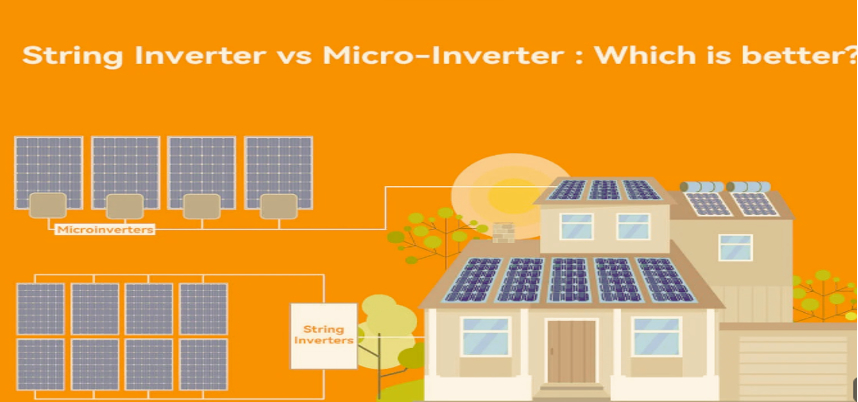
Address
1758 Firman Dr. Suite 100 Richardson, TX 75081
Call
(972) 675-7725
The Great Solar Debate: String vs. Microinverters: Making the Right Choice for Your Solar System
When planning your solar installation, choosing the right inverter technology is crucial. The inverter serves as the heart of your solar system, converting DC electricity from your panels into AC power that your home can use. Let's dive into the two main types of inverters and help you make an informed decision.
Understanding Solar Inverters: The Basics
Before comparing options, let's understand what inverters do:

String Inverters: The Centralized Solution
What Is a String Inverter?
A string inverter is a centralized unit typically installed on the side of your house or in your garage. It handles the power conversion for multiple panels connected in series (strings).
Important Note: All hybrid inverters (like SolarEdge, EG4, and Tesla Powerwall 3) are string inverters, but not all string inverters are hybrids.
Advantages of String Inverters
Disadvantages of String Inverters
Microinverters: The Distributed Approach
What Are Microinverters?
Small inverters attached to each individual solar panel, converting DC to AC at the panel level.
Advantages of Microinverters
Disadvantages of Microinverters
Making Your Decision
Consider these factors when choosing:
System Size
Installation Location
Future Plans
The Battery Factor
An important consideration often overlooked: when adding battery storage, the "single point of failure" argument against string inverters becomes less relevant. Why? Because all battery systems require additional components (transfer switches, gateways, combiners) that create their own potential failure points.
Debunking Common Myths
The "Christmas Light Effect" myth (one shaded panel affects all panels) is outdated. Modern string inverters with bypass diodes handle partial shading effectively. Don't let this old misconception drive your decision.
Conclusion
The best choice depends on your specific situation:
Choose String Inverters If:
Choose Microinverters If:
Remember: Consult with qualified installers and consider your specific needs before making a final decision.
Looking for more detailed information about solar inverter performance? Check out our comprehensive testing videos and data analysis.

Address
1758 Firman Dr. Suite 100 Richardson, TX 75081
Call
(972) 675-7725